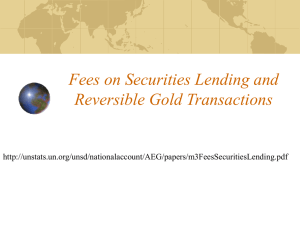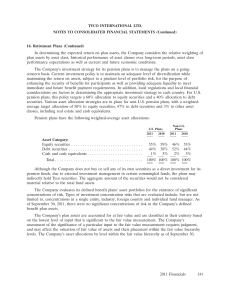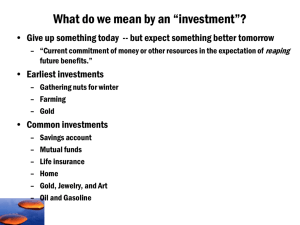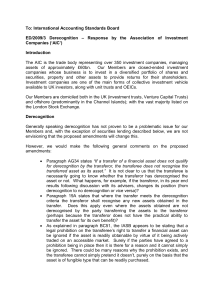PPT
advertisement
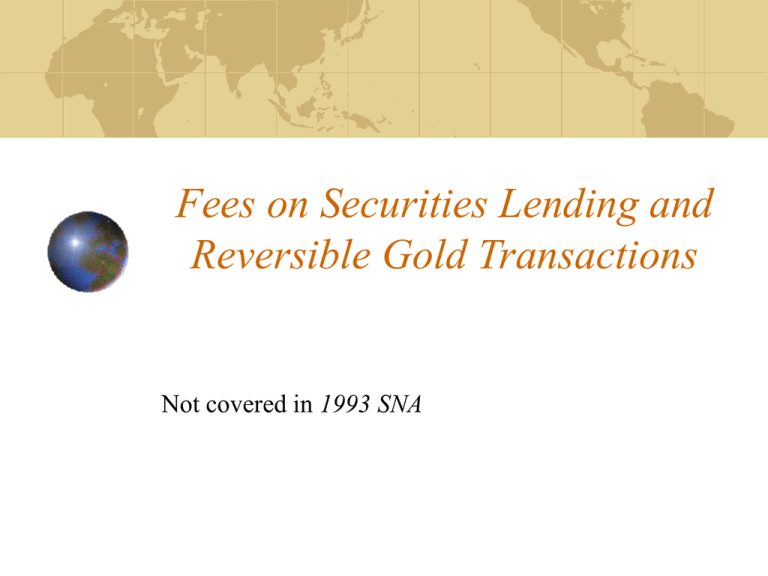
Fees on Securities Lending and Reversible Gold Transactions Not covered in 1993 SNA Securities Lending Delivery of securities, to be returned after a given time period. A type of reverse transaction. Provider of securities receives a fee. Often used by pension funds etc. to boost returns. Receiver of securities is typically a dealer who has a short position; so the securities are on-sold. Receiver of securities often will provide other securities as collateral. Same can be done with monetary and nonmonetary gold (subject of a later paper). Concerns No specific guidelines in 1993 SNA on the nature of the fee. Seems to be property income because financial asset put at the disposal of another entity. • It is the legal title to the security, rather than funds, that is provided. Concerns Does not fit into existing property income categories: Property incomes accrue when the owners of financial assets put financial resources at the disposal of other institutional units, but: • interest is the return of the creditor from the debtor; and • dividends is the return from the share issuer to the party that supplies equity funds. Could create new property income category. but minor. Could classify by lent instrument (dividends for shares; interest for debt instrument) but different to interest and dividends. Could treat as all interest but different to interest; simple to implement. Reversible Gold Transactions Similar arrangement involving gold. Gold can be financial asset (monetary gold) or nonfinancial asset. Fee on financial asset is property income; fee on produced asset is a service. Paper on classification of nonmonetary gold will be submitted to the January 2006 AEG meeting Proposed treatment: • Allocated gold accounts are ownership of specific gold and are nonfinancial assets. • Unallocated gold accounts are financial assets (an obligation of the dealer) rather than ownership of gold. Question 1 What are the views of AEG members concerning the three alternatives considered by the TG-RT for the treatment of the fees associated to securities lending and reversible gold transactions, namely: (i) Treatment as investment (property) income; (ii) Treatment as financial service; (iii) Blended approach whereby it would be treated as financial services if the “lender” were a financial intermediary, and as investment (property) income in all other cases? The Committee decided to treat the fee on securities lending as property income. The Committee decided to treat the fee on gold lending as a service if the gold were lent from allocated gold, and as property income if lent from a financial asset (unallocated gold or monetary gold). The Committee also noted that the payment of the fee may be made to the custodian. This payment represents a short-circuiting of the payment of the property income to the security owner, who would pay the custodian for the provision of a financial service. The Committee asked the IMF and the OECD to do further work to determine which type of service (financial intermediation or other financial services). Question 2 If treated as investment (property) income, under which category should securities and gold lending fees be included—interest, dividends, or some other category?
